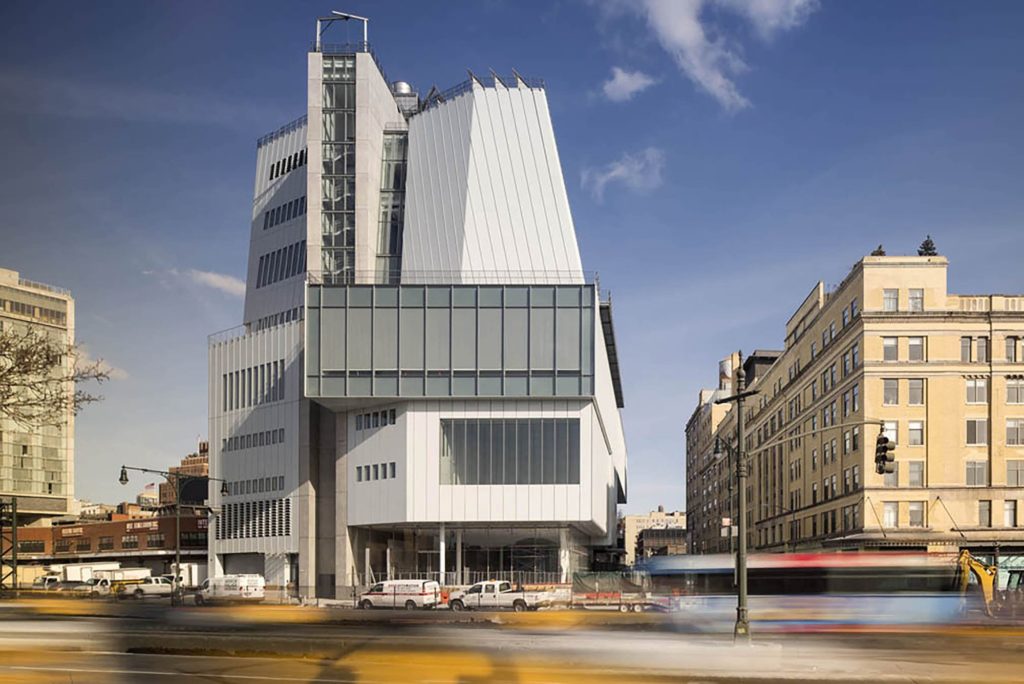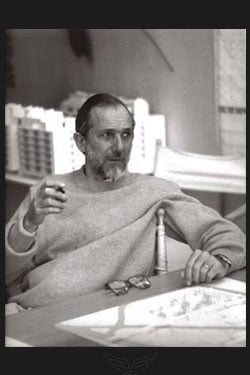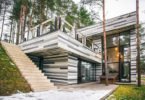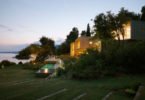Architect Renzo Piano has designed dozens of museum buildings becoming the most prolific museum designer of our time, Throughout his career. Yet, it has been some time since one of his designs has been as widely discussed and analyzed as his latest, the Whitney Museum in New York. In this interview with Architect Renzo Piano, originally published on The Value of Architecture as “A House for Freedom: an Interview with Architect Renzo Piano,” David Plick speaks with Piano about the many inspirations of the Whitney Museum, from the previous Whitney Museum by Marcel Breuer to the neighboring High Line, the city on one side and the river on the other.
An Interview With Architect Renzo Piano on the Whitney Museum and the Value of Public Space

Architect Renzo Piano is the great champion of public space. Whether the visitors and citizens of the city are aware of it or not, he improves their quality of life by sharing with them a living space designed specifically for the cultivation and dispersion of ideas and the enrichment of civic life.
He’s the architect who cares about the individual’s experience of a building, who cares about how people interact with the space, and how the space then interacts with the world. At the Whitney Museum of American Art, much like the Centre Pompidou, or Beaubourg as he would say, he showed this by including a large area in front-a “piazza” he calls it—for people to meet, congregate, chat, and even loiter.
He’s somehow simultaneously innovative and selfless. And because of this, he can masterfully fuse form and function, creating beauty for himself because he loves it and thinks it will save people, yet it all means nothing to him if he can’t share in this emotion with others.
Architect Renzo Piano is Italian, but he is a citizen of the world. He made his home in Paris, but also has offices in New York and Genova. And today, it’s hard to visit a major international city without being able to experience the joy of a architect Renzo Piano space.
There is a Architect Renzo Piano “piazza” in Fort Worth, Texas at the Kimball Art Museum, in San Francisco at the California Academy of Sciences, in Chicago’s Art Institute, in Amsterdam’s NEMO Science Museum, in Rome at the music auditorium Parco della Musica, in Paris, Los Angeles, London, and now in the Meatpacking District—New York’s center for international art and fashion.
When I initially contacted Architect Renzo Piano’s office for this interview, I didn’t expect a response. I thought he was far too internationally recognized and busy changing the world with beauty to speak with me, but I was remarkably and joyously surprised to hear that he not only would do the interview, but he would prefer to do it over the phone. I thought to myself, “That is so Architect Renzo Piano. He would prefer the more human connection of a phone call, rather than emailing back and forth.”
Right now, I’m writing these words on the seventh floor terrace of the Whitney Museum of American Art, and what do I see? I see people congregating out front, sharing ideas and uniting to celebrate art and beauty.
I see people peering over the edge of the terrace, interacting with the space. I see movement – the citizens of this city and the world moving up and down the stairs of the terraces and throughout the outdoor sculpture parks in this magical building that really looks like it could just get up and fly away, which was Architect Renzo Piano’s wish because “the destiny of any architect is to fight against gravity. Actually, it is the destiny of everybody to fight against gravity.”
To anyone who hasn’t embraced this man and his work, do yourself a favor and not only experience his buildings, but listen to him speak. Listen to his genuine passion and sincerity when he speaks of beauty, art, and the poetry of architecture.
Listen to him when he speaks of humanity and the joy of the collective experience. In his Whitney dedication speech he called his design “a bit impolite,” but nothing could be further from the man himself—who is gentle, kind, and sincere.
Architect Renzo Piano is not just an architect who makes mesmerizing buildings—he’s the kind of artist the world needs to bring us closer together, to share in the simple joy of a piazza.
TVOA: Your building workshop in New York is located on Washington Street, which is right around the corner from the new Whitney. When they approached you with the project eight years ago, had you already an intimate relationship with the Meatpacking District? Did you already have an idea of the style the neighborhood needed and demanded?
Architect Renzo Piano: Actually, when we started, it was more than that. It was twelve years ago.
TVOA: It was twelve years ago? In your Whitney dedication speech you said that the process took eight years or nine years.
Architect Renzo Piano: Well, for two or three years we were working on Madison Avenue and 75th street to make the extension on site, but this didn’t work because it was too much-too much trouble, too much work, too much money for too little result because it was impossible to have enough gallery space, so then we started and the client started to struggle about finding a new site, possibly downtown, because this is where Gertrude Whitney came from.
And then, I remember, we went down to see three sites in the west part of the city in Chelsea. I got the impression that this site on Gansevoort and Washington Street was the best one so far, because it was at the end of the High Line. It was in a position where you could connect with the rest of the city.
That was about eight years ago. And at that time, just walking in the street I saw the office to be let upstairs on Washington Street, so I said, “That’s the perfect place for our office to be.”
I don’t know if the office came before the site, or the site before the office, but it was at the same time. So, that was the moment when we started thinking about that place, and the opportunities that that new place offered to the new Whitney.
Of course, when you go there, even eight years ago, it was changing very fast—and clearly it was going to change. Because it’s a typical thing happening all the time, when you have an industrial place like that, it’s an inevitability—there’s going to be a mutation in the city, and that was attracting everybody, including me.
TVOA: What were the advantages of that space over the previous Upper East Side location?
Architect Renzo Piano: Well, the reason why we fell in love with this place and immediately started to work there was to have space on the ground floor. That’s the most important thing that Breuer missed in the design for the building on Madison.
He missed space in front of the building, to connect to the street. But in our case, we immediately thought we needed the space on the ground for pedestrians to come to enjoy the space, to make the building accessible, to create that sense of urbanity and openness. That was the most important thing in that moment.
Nowadays, when you think about a cultural institution like the Whitney, you think of something else. It’s no more like a fortress. Now, it’s more accessible. It’s a big revolution, but it took about forty years.
When we designed Centre Pompidou, Beaubourg, it was ’71, so it was about ten years after Breuer made the Whitney. Beaubourg was one of the first public centers which had the idea that a public building should be accessible, not creating intimidation, but just openness.
I feel that a public building, generally speaking, especially when they are a building for culture, but even any public building like a library, school or university-they need to have this quality of openness and accessibility because this is what makes a city a better place to stay or to live.
Cities are based on this. Cities are not cities when they are based on buildings that take possession of the land. They don’t talk to the streets. When you make buildings for public use, it’s the opposite.
You have to make something that talks to the street, that creates a sense of communication, a sense of belonging to the community. In some ways, it was quite inevitable to move from uptown to downtown, to create a place that is more in this logic.
Of course, the Breuer building is a great building. I love that building. I think it will always be there. Good quality architecture can survive forever, but the time had come now for the Whitney to have a different dialogue with the city.
TVOA: You mentioned the High Line before and that an advantage of the Gansevoort Street location was that this park terminated right at the museum. But, the High Line wasn’t completed or opened yet when you began your designs of the new Whitney.
Architect Renzo Piano: No, no, it was not yet open. It was still in work. Actually, we collaborated in the design of the Maintenance and Operations Building of the High Line that is located exactly there at the end.
So, we finished that about one year ago, but back then, at that time, The High Line was just a promising idea. It was just on paper for the moment. But it was clear that it was a fantastic and inspiring element that can happen in a city like New York-inspired from the strong, frank willingness-inspired by the industrial quality of the manufacturing. The High Line was inspiring in many ways.
It’s a public space, elevated, inspired by our tallness in certain ways. Also, the form of the High Line, the language of the High Line, the semantics of the High Line, became part of the inspiring elements of the building. That’s for sure.
TVOA: Did you know what the design of the High Line at its termination near the museum would look like? Did you have the plans in advance?
Architect Renzo Piano: Yes, the plans were done at that time. Diller & Scofidio made the stairs going down, so we knew that. We met with them, and they already made the project for the garden. So we knew everything. We knew everything.
TVOA: So, it was really inspired by so many different elements, not just a single vision.
Architect Renzo Piano: When you make a project like this, you cannot just say, “I was inspired by this.” We were inspired by one hundred different things. The High Line was certainly one of those, but so was the street life.
The other was the fragmentation of west Chelsea as a structure of the city. It’s not massive in that part of the city. It’s actually broken into little pieces. The buildings are not very tall, so the idea was that our building would be in dialogue, talking to that part of the city with the idea of breaking the scale of the buildings on the side coming down to make a transition to the High Line.
And also, not to take the light away from the High Line. Because that’s the other point. In the afternoon, we are able to keep the sun and the light on the High Line for a long time. That was part of the idea.
And also, scale-the scale of the buildings coming down became part of the fragmented west Chelsea. And at the same time, with the fantastic location on the west side towards the Hudson River, it is exactly the opposite.
The dialogue was not with the city. It was with the high-speed traffic of the highway, and then of course, the vastness of the Hudson, and the vastness of the rest of the country. You can feel it. You can feel it through New Jersey, feel the vastness of the sunset.
The building is so reactive to each different direction. On the south side, the building must be in dialogue with the big buildings built in the 70’s-the big building right there on Gansevoort is just massive. And also, we got the sun.
We decided to put an opaque wall there because you don’t want to have too much sun in the gallery. You can’t. But on the east side, you have this dialogue with the city. On the west side you have the dialogue with the vastness of the country.
On the north side you have a dialogue with probably an extension. It may happen because the piece of land on the north of the Whitney is open to transformation. Because we are not using all the meat market space, of course, we are all only using the south part of that land.
So, there’s extra land there. We felt from the beginning that this site was talking to a very different gravity in each direction-north, south, east, west, in a very strong, almost contradicting condition. On the north, it’s growth. On the south, it’s value. On the west, it’s the vastness of the sunset. On the east, it’s the fragmentation of the city. So the building had to react to all those things.
TVOA: Did the art itself influence your design decisions?
Architect Renzo Piano: The collection was always in mind. The Whitney collection of American art is a fantastic collection: brave, strong, and free. I’ve said a number of times, freedom is what you feel when you look at that collection. Generally speaking, when you look to American art, it’s about freedom.
TVOA: Are there any works currently at the Whitney that you’re inspired by or pique your curiosity?
Architect Renzo Piano: Mark Di Suvero is a great friend, and he has a beautiful piece on the sixth floor, I think. And Jasper Johns is great. I saw him in those days of the opening. He’s a great man. I have such a long list.
American art is something that has always been inspiring. I’m Italian, living basically in Europe my whole life. For people like me, we grew up with the idea that freedom was coming from many expressions of American art. From literature, Kerouac and Steinbeck.
All of this is about a sense of freedom. In theatre and music-John Cage and all those people. In theater, cinema, dance, ballet, the poetry of literature. It’s fundamentally the sense of the big prairie, the big space, for us.
When you grow up in Italy, you have the double inspiration: one of course is gratitude for the history that has been feeding your family and your subconscious, but at the same time, you have this love for rebellion and freedom. So, for me, this idea of working on American art, and making a building for American art, is giving homage to this sense of freedom.
TVOA: How much did the history of the Whitney Museum and Gertrude Vanderbilt Whitney affect your process?
Architect Renzo Piano: It’s very difficult to make a good building if you don’t have a good story to tell. It’s also difficult to make a good movie when you don’t have a good story to tell. It’s difficult to make a good novel if you don’t have a good story. Of course, you have to be a good writer. You have to be a good movie maker.
You have to be a good architect, but at the end, you need a good story. Otherwise, you are in trouble. And the Whitney is a great story, from the beginning with Mrs. Gertrude Vanderbilt Whitney. She was a collector this lady.
She was somebody rich in art, but free in art. She set up this funny club, a meeting place for artists. That’s another story. As an artist you had to pay one dollar to be a part of the company. At that time, it was 1920, or something like that. Downtown, not uptown. So, for forty years the Whitney was growing and feeding interest and exchange, emotions, in the southern part of the city. And then they moved uptown in 1961, and Mr. Breuer did a fantastic job. I always loved that building. It’s so strong, so brave.
TVOA: So you loved the brutalist design of the previous Whitney?
Architect Renzo Piano: Forget the brutalism, it was a building with character. It’s a miracle because when you go inside, it’s quite perfect from that point of view. And many of the inspirations for the new Whitney came from there.
I actually wanted to talk about this because inspiration is not like mimicking. Mimicking is wrong, but stealing inspiration is good. For example, in that building you used to take the elevator, and when the elevator was opening, you were right in the middle of the gallery.
And this is what we also did, in a different way of course. And also, Breuer’s sense of flexibility, openness, the un-pretentiousness of the space, for the gallery, is something we tried to preserve.
And also the roughness of the material, Breuer used stone for the floor, and we used pine. But the pine we used is a special kind of pine that was recycled from old factories. And this recycled pine is almost like saying, “Artists, come and lay down whatever you want to lay.” That’s Breuer. That’s Breuer.
TVOA: To what extent did you collaborate with the Whitney staff? How involved were they in the process?
Architect Renzo Piano: Oh, very much, from the top to the bottom. It’s immense work. We made this project in our office in Genova.
TVOA: That’s interesting that you actually didn’t make it New York. I would’ve thought that.
Architect Renzo Piano: Well, people were traveling a lot-up and down, to New York, then to Genova, making prototypes, and doing a lot of testing in Germany. Architecture is a teamwork. And Adam Weinberg, of course, has been a constant presence.
But other people, like Bob Hurst, Scott and everybody on the board, Mark Di Suvero, Chuck Close, who was a member of the design committee, and so many others-collaboration was essential. They first called me in 2001 or 2002, maybe. I was on site at the Morgan Library, and they invited me for a coffee at the Whitney, and I went for a coffee, but it wasn’t a coffee, it was a design selection committee.
(We both laughed.)
And when you say “Whitney,” you really mean those people: Adam Weinberg, Donald, Carol, the board, the curators. Architecture is a teamwork, and it’s hard to say who had the idea, but when you have a good client you don’t really keep account of what you did, what they did. It’s a nice game where you get together. Without a good client, of course, there’s very little hope that you can do something good. A good client, and a good story, and then eventually you can do something good.







Leave a Comment
You must be logged in to post a comment.